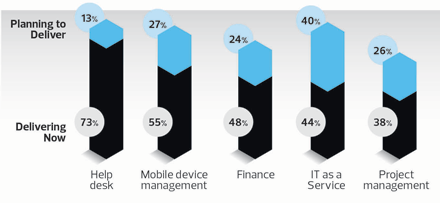The Byte: Fast Facts from the Feds
The FedTech Index
Some call the new national Cybersecurity Framework a Rosetta Stone for protecting important systems. How did the stone roll to where it is today?
December 2008
The Center for Strategic and International Studies publishes Securing Cyberspace for the 44th Presidency.
February 2013
The president issues Executive Order 13636, “Improving Critical Infrastructure Cybersecurity.”
June 2013
The United States files a criminal complaint against former contractor Edward Snowden for taking classified documents from government systems.
October 2013
The National Institute of Standards and Technology requests comments on the preliminary Cybersecurity Framework.
December 2013
Retailer Target acknowledges a massive data breach, drawing an investigation by the Justice Department.
February 2014
NIST releases the voluntary Cybersecurity Framework 1.0 and the Homeland Security Department launches the Critical Infrastructure Cyber Community (C3) program to help organizations use the framework.
Data Center in the Crosshairs
What's the next biggest, non–Defense Department data center scheduled for closure under the Federal Data Center Consolidation Initiative? It's the Treasury Department's 10,947-square-foot New Carrollton Federal Building data center outside Washington, D.C., which houses IRS systems. Treasury is virtualizing servers and moving systems to a pair of other data centers and expects to be done by September.
"Consolidation can lead to greater capacity by reducing the percentage of spending required on common IT services and increasing the percentage of spending on mission services," says Raghav Vajjhala, Treasury's chief technology officer. That IT spending has dropped from 46 percent to 38 percent over three years, he says.
What Does a Thunderclap Sound Like?
The White House and the Federal Emergency Management Agency have experienced the power of the "crowdspeaking" platform Thunderclap. As agencies know, a simple tweet can get lost in the deluge of other tweets. But a Thunderclap is a coordinated, one-time blast of hundreds or thousands of the same tweet, designed to amplify a message.
"FEMA is always looking for new and unique social media strategies to encourage Americans to take steps to prepare for disasters," says FEMA spokesman Dan Watson. During FEMA's Ready campaign, a Thunderclap by more than 850 users resulted in more than 1.3 million social media impressions, driving 2,200 users to FEMA's website, Watson says.
Thunderclap's government-approved terms-of-service agreement was recently listed on HowTo.gov.
Diving into Shared Services
Federal IT departments explain their plans to offer shared services in hopes of realizing up to $28 billion in overall IT savings.

SOURCE: "Shared Services: Ready or Not?" (MeriTalk, March 2014)
What's Your Mobility Profile?
Roughly 90 percent of federal workers use mobile devices in their jobs, but only 11 percent of those devices are secure, according to a January Mobile Work Exchange report. That doesn't have to be the case. Whether your agency is beginning to explore the benefits of mobility, already uses mobile devices, is preparing a business case, or has practiced mobile computing for years and is ready for next steps, Technology Insights, a new app from CDW, can help. Which resources match your mobility needs? Find out here.
Fed Tweets: CIO as Human Flak Jacket
.@govfresh Being a public service #CIO means you're a "digital diplomat" & "human flak jacket" &sometimes that means bullets from all angles
— David A. Bray (@fcc_cio) April 7, 2014
Getting value from #BigData is like Gold mining. You go through a lot of dirt to find the nuggets. #symgovsym
— Bobby Saxon (@BobbySaxon) March 11, 2014
More often than not, innovation in government is simply reimagining long-assumed processes from the citizen's perspective.
— Ben Balter (@BenBalter) March 15, 2014
1st reaction 2 NTIA/IANA news: migrating #InternetGovernance further away frm US govt is good IF Net doesn't get snatched by other govts.
— Robert M. McDowell (@McDowellTweet) March 14, 2014
You can sit home + complain about the govt, or you can come fix it! Be a PIF: http://t.co/76GbKSbDRC or work w/ FEMA: http://t.co/cjoYQE7RyC
— Marina Martin (@MarinaMartin) March 6, 2014








